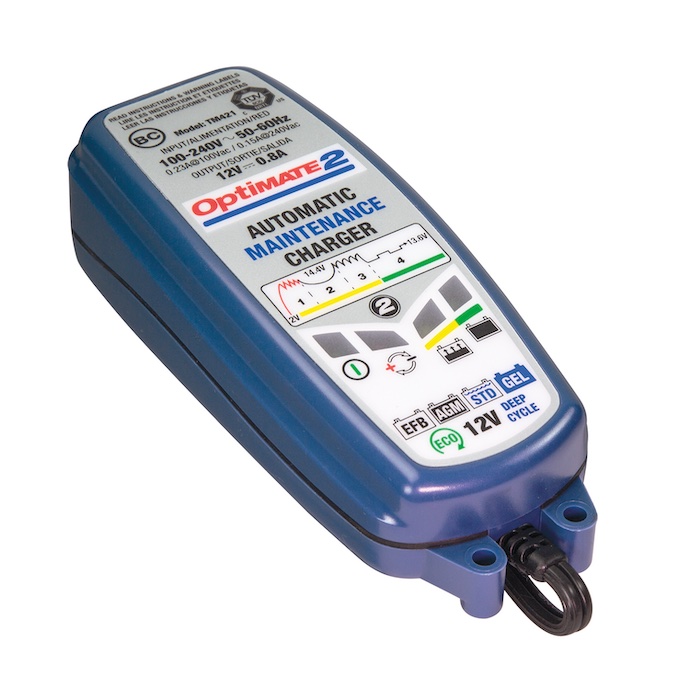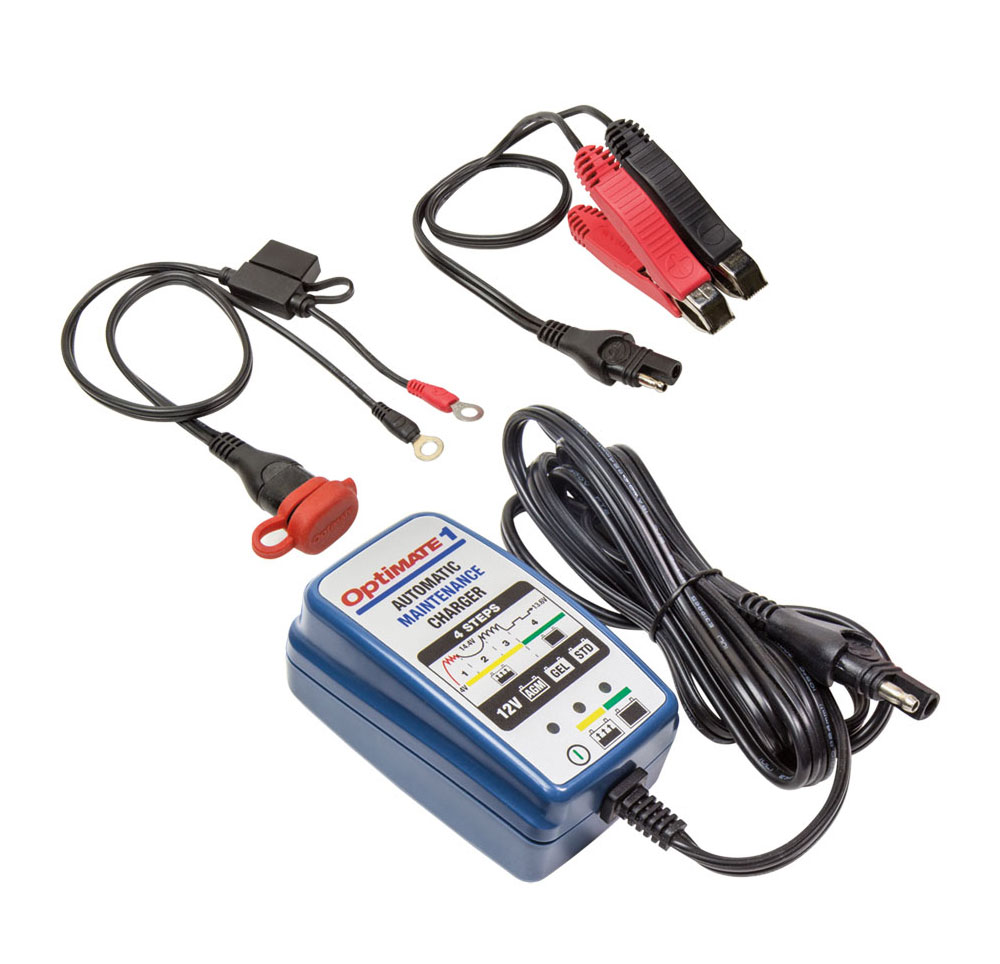Lithium Ion batteries: how to identify and care for them
 Lithium Ion (Li-ion) batteries are becoming more commonplace in our daily lives and can be found in most smartphones, laptops and power tools, as well as OEM recommended batteries in our motorcycles.
Lithium Ion (Li-ion) batteries are becoming more commonplace in our daily lives and can be found in most smartphones, laptops and power tools, as well as OEM recommended batteries in our motorcycles.
KTM, Husqvarna, Honda and Yamaha now fit 12 Volt Li-ion batteries to selected models, because they’re compact and lightweight, yet deliver high voltages. For these reasons, they’re also an increasingly popular aftermarket choice for motorcyclists, especially for racing and custom builds.
However, Li-ion batteries are considerably more expensive than the lead acid units they’re designed to replace, and are particularly vulnerable to damage and failure if they’re not treated and maintained correctly. OptiMate – battery charging experts and creators of a range of specific Lithium chargers – explain how to identify, care for, charge and maintain Li-ion batteries properly:
#1 How do I know if my bike is fitted with an Li-ion battery?
Although Lithium Ion is the general group name used for all Lithium batteries, there are many different types. The only type used as engine starter batteries is Lithium Iron Phosphate – otherwise known as Lithium Ferrous Phosphate or LFP (chemical formula LiFePO4).
Lithium engine starter batteries are normally either 12.8V or 13.2V, and will generally be marked as ‘Li-ion’, ‘LFP’ or ‘LiFePO4’.
If you’re still not sure, test your machine’s charging system to see if it is compatible with a Li-ion battery: if the charging system is putting out the safe charging rate of 14.4V, your battery is probably Li-ion; if it is putting out more than 14.6V to the battery, it’s likely to be lead acid.
Note: If you’re thinking of upgrading your bike from lead acid to Li-ion, carry out the same test. The OptiMate Test TS120 – Battery Monitor and Tester will display the battery rest Voltage, the charge system voltage with the engine running and the cranking voltage too, so you can quickly and easily identify the type and condition of your battery and charging system.
#2 How not to treat an Li-ion battery
Li-ion batteries are particularly vulnerable to damage if left attached to a machine and unattended, and if not maintained or charged in the right way.
The first and most common way to damage a Lithium battery is by overcharging it – if it is subjected to a voltage of above 14.6V, rapid cell damage will occur. Excessive overcharging can cause a Li-ion battery to heat up and eventually self destruct: burning from the inside out.
The second way to damage a Li-ion battery is to discharge it to a very low voltage. They often have a lower Ah capacity, so can flatten quickly if left connected for long periods – and once discharged they can be difficult to recover.
The third way to damage a Li-ion battery is to attempt to re-charge it using a lead acid battery charger/optimiser. Lead acid chargers/optimisers are designed to deliver high current at low voltage and then taper off, whereas a lithium battery at low voltage needs a controlled low current charge until it reaches 12.8V. It is crucial to use a charger/optimiser specifically designed for Li-ion batteries.
The fourth and final way to kill an Li-ion battery is by not maintaining it at all. LFP batteries are typically 1/3 or ¼ the Amp-hour of the equivalent lead acid battery and will drain three to four times faster when connected to a bike.
Note: A Li-ion battery cannot and must not be jump-started. This will not only damage the battery itself, but can also cause problems with the bike’s charging system and/or voltage regulator.
#3 How do I look after my Li-ion battery properly?
Although LFP batteries are made to be replacements for 12 Volt lead acid batteries, they are charged and maintained in a completely different way. The charge voltage range for Lithium batteries is much more limited compared to a 12V lead acid battery, so you must always use a Lithium-specific battery charger.
The safe charging rate is 14.4V, and the charge rate must not exceed 14.6V. To avoid problems with your Li-ion 12V starter battery, and ensure you are properly and safely maintaining and charging it, use the following steps:
- Check battery and charging system. Test your machine’s battery to make sure it’s in good condition. Also test the charging system to see if it is working properly and is putting out the safe charging rate of 14.4V.
- Always use a specific lithium battery charger. The OptiMate Lithium series will safely recover, charge and maintain your lithium battery at all times: the OptiMate Lithium 0.8A for home use and the fast-charging Lithium 5A for motor sports.
- Monitor and maintain your lithium battery at all times. To help prevent discharging and overcharging, the O127 monitor will inform you about the charge status of your lithium battery at all times, helping to prevent overcharging and over-discharging.
Note: All OptiMate lithium products are safe to use with all LiFePO4/LFP batteries. All the chargers in the OptiMate Lithium Charger range maintain LiFePO4/LFP batteries and protect against voltage drop. Fully automated, they assesses the battery’s condition and select the charge programme to suit. Progress is tracked to prevent unnecessary charging; an alternating ‘charge and rest’ maintenance programme protects the battery against over-discharge.
OptiMate launched its battery saving motorcycle charger in 1995 and continues to lead the field to this day. For details of the complete range of battery optimisers, monitors, USB connectors and accessories visit www.tecmate.com















